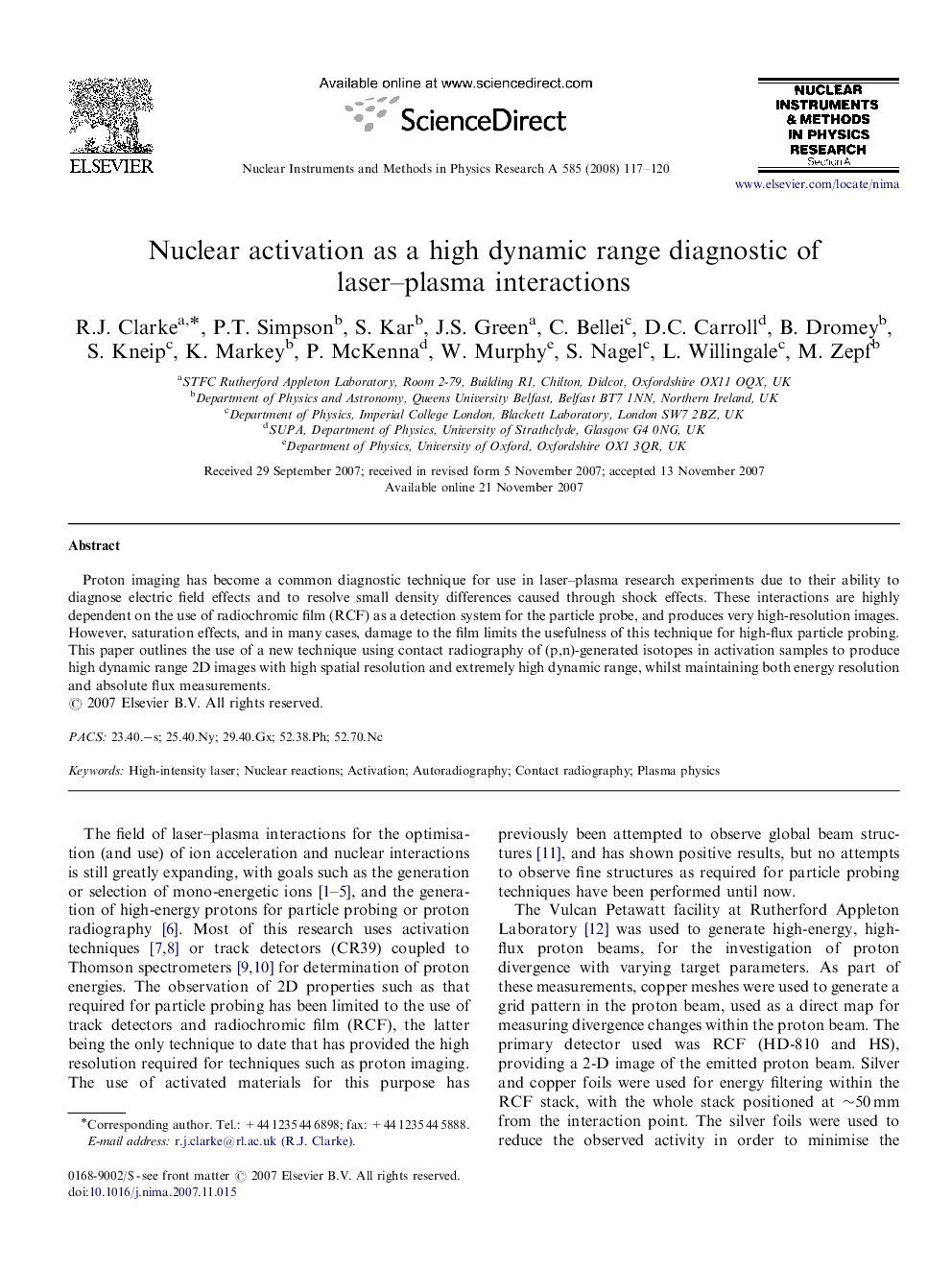| Article ID | Journal | Published Year | Pages | File Type |
|---|---|---|---|---|
| 1830166 | Nuclear Instruments and Methods in Physics Research Section A: Accelerators, Spectrometers, Detectors and Associated Equipment | 2008 | 4 Pages |
Proton imaging has become a common diagnostic technique for use in laser–plasma research experiments due to their ability to diagnose electric field effects and to resolve small density differences caused through shock effects. These interactions are highly dependent on the use of radiochromic film (RCF) as a detection system for the particle probe, and produces very high-resolution images. However, saturation effects, and in many cases, damage to the film limits the usefulness of this technique for high-flux particle probing. This paper outlines the use of a new technique using contact radiography of (p,n)-generated isotopes in activation samples to produce high dynamic range 2D images with high spatial resolution and extremely high dynamic range, whilst maintaining both energy resolution and absolute flux measurements.
